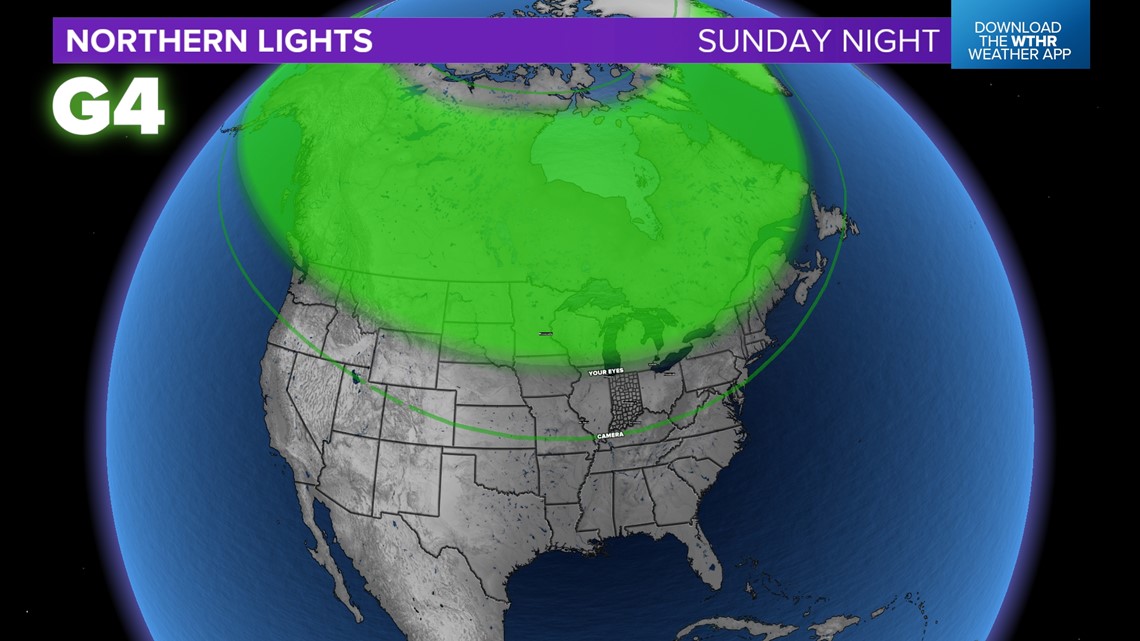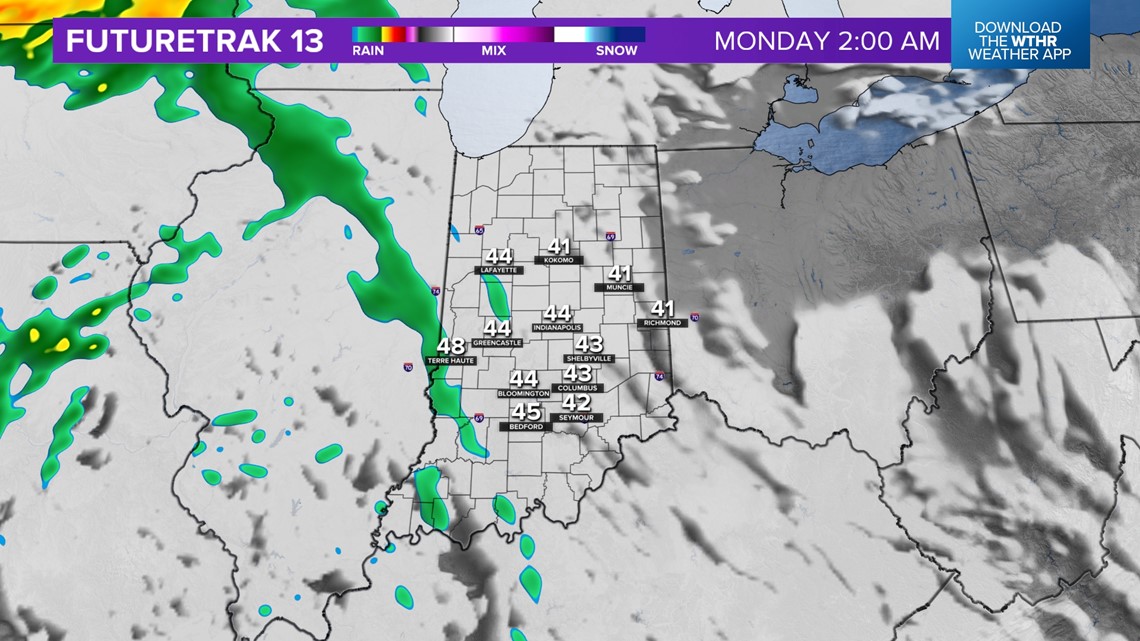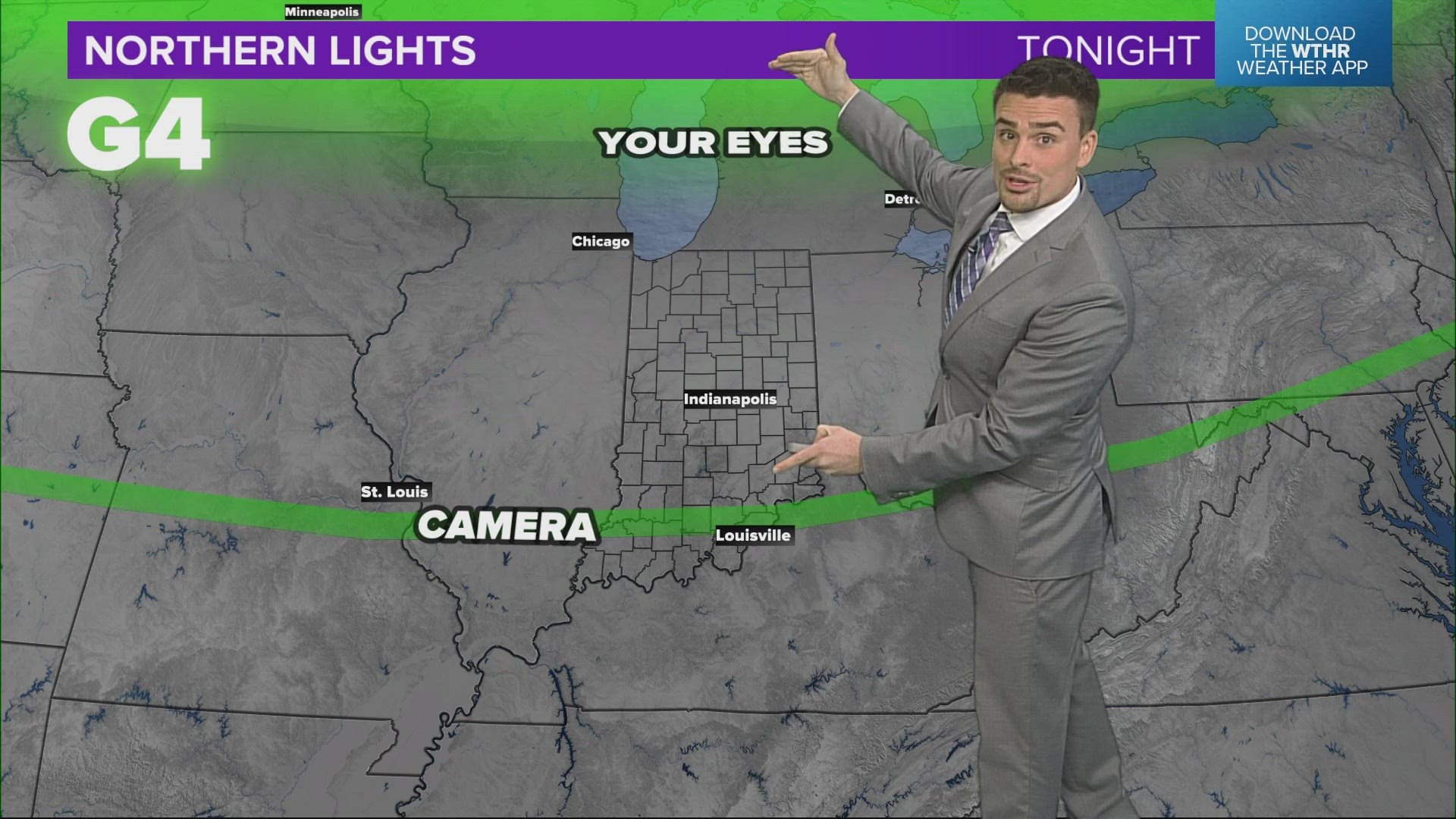INDIANA, USA — STORY NO LONGER ACTIVE
Will we see the northern lights dancing above our heads in Indiana? Most likely not. But there is still a chance to see them at a distance, especially with a camera. Otherwise you need to go north, or take a flight above the clouds. Plus, the full moon will make them even tougher to see.
Tap HERE to our interactive radar and satellite to track the clouds in case they block the view.
ALERT: A G4 (severe) geomagnetic storm alert has been issued by the NWS Space Weather Prediction Center as a CME hit Earth's magnetic field earlier on March 24. This will activate a spectacular viewing of the aurora borealis, or northern lights, across North America Sunday night into early Monday morning. Indiana may be able to see it, but generally with help from a camera.
Note: Northern lights forecast are very tricky and can change quickly. This is a best guess from local and national meteorologists. Social media forecasts usually are too aggressive.
How far south will the northern lights be seen tonight?
The vast majority of Alaska and Canada will get a showing the aurora borealis, however a G4 storm with an intense solar wind may help the charged particles to move farther south to some northern states across the U.S.A


- Green shaded area: possible to see them with your own eyes
- Green line: along and north of the line, you'll need a camera most likely
The green area shows places that may be able to see the northern lights with your own eyes. They may be dancing right above our heads for those living along the U.S. – Canada border. Farther south in the green area, they will likely still be at a distance in the northern sky.
Will you be able to see them from Indiana?
Minus cloud chances (scroll down for the cloud forecast), you should be able to see the aurora across most of Indiana, away from city lights, with the help of a long-exposure camera. You may not able to see them with your eyes.


Long-exposure cameras can soak in light for several seconds, allowing us to see on a screen what we cannot see with our own eyes. However, the full moon tonight will make it even harder to see the lights. All the extra moonlight may interfere with camera shots.
When should I look for the northern lights?
The best time to see the lights will be from 11 p.m. Sunday through 3 a.m. Monday. This is also generally the case if you take a trip north to see the northern lights in Alaska or Canada in the typical aurora belt.
What about clouds? Will they get in the way?
Most likely yes. Indiana will still be a tough place to see the northern lights, but these cloud chances greatly diminish the chance of seeing the northern lights.
As our next cold front approaches, clouds will be moving into Indiana. We have highlighted an area in northeast Indiana where there should be fewer clouds blocking the chance to see the lights.


There may even be a few light rain showers that develop tonight, especially in western Indiana. That also coordinates with thicker clouds.


Where should I go to see them?
- Generally, get away from city lights. The more rural you are, the better chance you will have. Then look north.
- The best chance to see the lights will be the farther north you go. Some of the best spots for watching the northern lights are at the Lake Michigan lakeshore where there is less light pollution.
Will the forecast for northern lights change?
The northern lights have fascinated humankind for thousands of years. We still do not completely understand them. We watch for CME's (coronal mass ejections), or bursts of solar energy from the surface of the sun. Once they burst, they usually take 1-3 days to hit the earth, if we are in the direct path. There may be different waves of solar wind also registered, which means they can appear and dissipate rapidly at random times through the night.
—13News Meteorologist Matt Standridge

